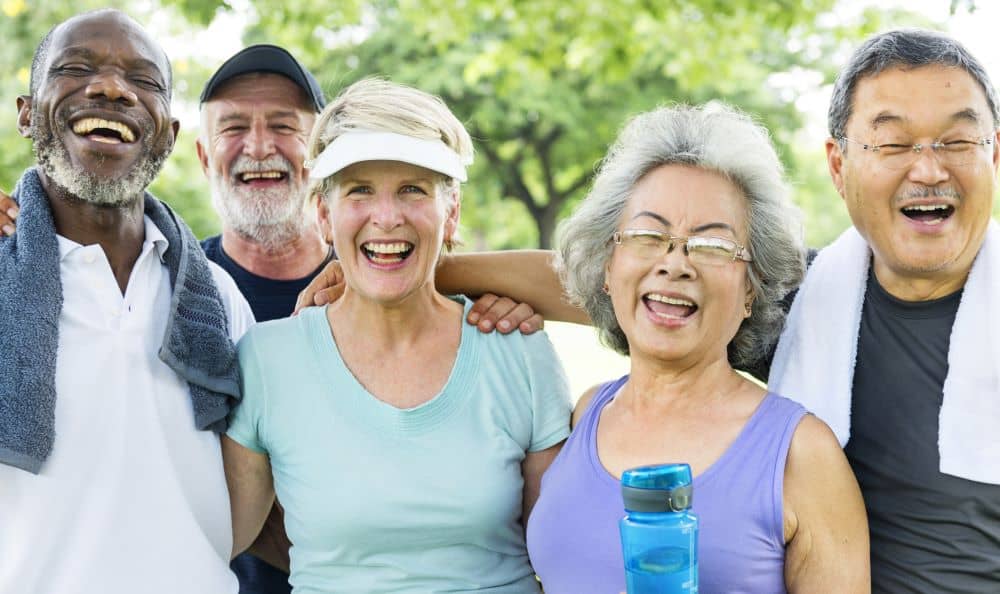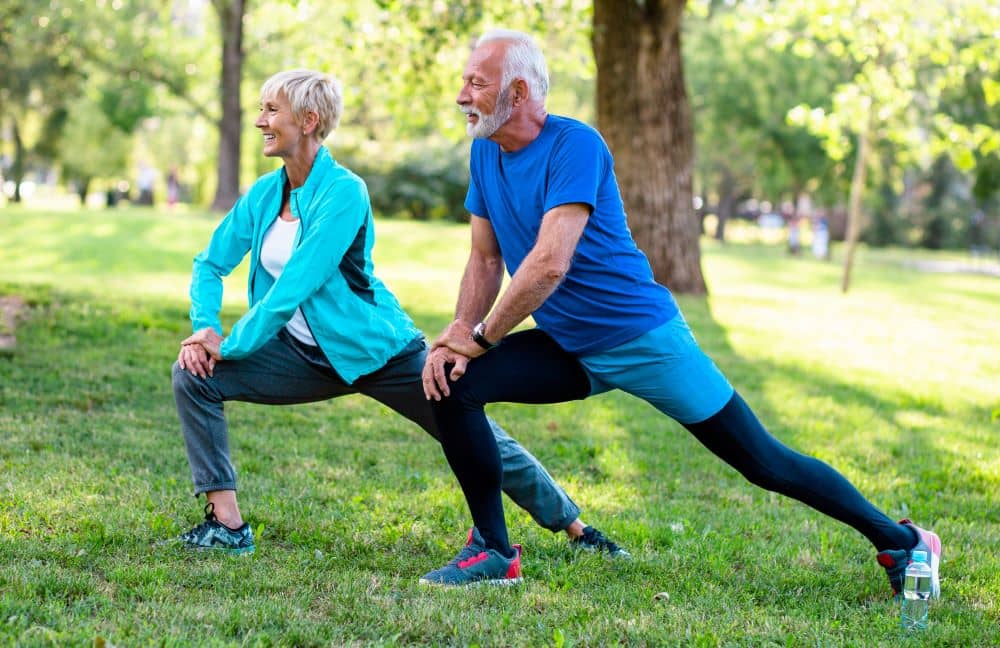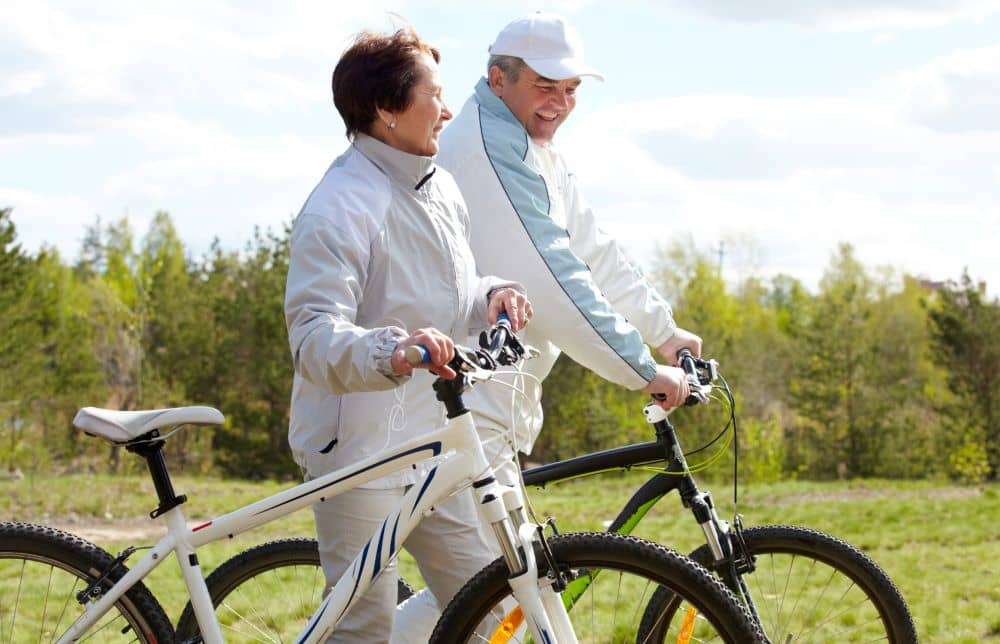As we age, there are a lot of reasons why exercise becomes more difficult: stiff muscles, aching joints, and general fatigue are just a few of the barriers that can make exercise difficult for older adults. However, if you’re doing the right exercises the right way, you can still make regular physical activity a part of your journey toward better health.
Benefits of Exercise for Older Adults

Exercising does a lot more for older adults than just strengthening bones and muscles. Regular exercise can give you more energy, help you sleep, and improve your balance. Your overall quality of life can improve dramatically just by adding regular exercise to your routine. However, getting started isn’t always easy. Let’s take a look at some tips that can help older adults get started with a safe, effective exercise routine.
According to the Centers for Disease Control and Prevention, older adults should get about 150 minutes of moderate-intensity exercise each week. This may sound like a lot, but there are plenty of options that will allow you to fit exercise easily into your life.
Strength Training
Many seniors never consider adding strength training to their exercise repertoire. However, research suggests that older adults can really benefit from performing strength training 2-3 times per week. Such exercises can improve bone density, improve sleep, and reduce the symptoms of osteoporosis, heart disease, arthritis, and type two diabetes.
Here are a few simple strength training exercises that you can perform at home!
1. Abdominal Contractions
- Take a deep breath and tighten your abdominal muscles.
- Hold for 3 breaths and then release the contraction.
2. Wall Pushups
- Stand about 3 feet away from a wall with your feet shoulder-width apart.
- Lean forward and place your hands flat on the wall, in line with your shoulders. Your spine should be straight, not sagging or arched.
- Lower your body toward the wall and then push back.
3. Pelvic Tilts
- Take a deep breath, tighten your buttocks, and tilt your hips slightly forward.
- Hold for 3 seconds.
- Now tilt your hips back and hold for 3 seconds.
4. Shoulder Blade Squeeze
- Sit up straight in your seat, rest your hands in your lap, and squeeze your shoulder blades toward one another.
- Focus on keeping your shoulders down, not hunched up toward your ears, and hold for 3 seconds.
5. Knee Lifts
- Seated in a chair, contract your right quadriceps muscles and lift your leg. Your knee and the back of your thigh should be 2 or 3 inches off the seat.
- Pause for 3 seconds and slowly lower your leg.
- Repeat with the opposite leg.
Stretching
Stretching is one of the best ways for older adults to see a significant improvement in their overall health and well-being. According to research, stretching allows a greater range of motion, releases muscle tension, improves circulation, and improves balance and coordination.
Let’s take a look at a few simple stretches that can help you get started!
6. Neck Stretch
- Stand with your feet flat on the floor, shoulder-width apart.
- Turn your head slowly to the right. Stop when you feel a stretch. Hold for 10 to 30 seconds.
- Now turn to the left. Hold for 10 to 30 seconds.
7. Upper Back Stretch
- Hold your arms in front at shoulder height, with the backs of your hands pressed together.
- Reach your fingertips out until you feel a stretch.
- Hold for 10 to 30 seconds.
8. Overhead Side Stretch
- Stand with your feet hip-width apart and raise your arms overhead.
- Gently lean to the left and hold for 10 to 30 seconds.
- Return to centre and repeat on the other side.
9. Hamstring Stretch
- Place your right heel on a bench with your leg straight and toes up.
- Gently hinge forward from your hips until you feel a stretch.
- Hold for 10 to 30 seconds.
- Release, switch legs and repeat.
10. Cat-Cow
- Start on all fours with your hands below shoulders and knees below hips.
- Gently round your back up toward the ceiling while tucking your chin.
- Reverse by arching your back while lifting your hips and head.
- Continue alternating for 10 to 30 seconds.
Low-Impact Cardio
When your joints start to ache, especially your knees, you may think that it’s time to cut cardio out of your workouts. However, research shows that doing so may make the problem worse. In a study of how the knee joint is affected by physical activity, researchers found that physical activity is actually beneficial to joint health. Performing cardiovascular exercise improves the condition of the cartilage, which reduces pain in the associated joints.
Despite the benefits, certain cardiovascular exercises can be difficult if you have a pre-existing problem with your joints. High-impact exercises can put a lot of stress on the joints, increasing pain related to inflammation. Let’s take a look at some low-impact cardio options that can be great for older adults.
11. Cycling
Hopping on a bike, whether in the great outdoors or the gym, is a great alternative to high-impact cardio. Cycling uses the same basic motion as running but doesn’t require a high impact on the leg joints from your foot hitting the ground. Research suggests that cycling improves cardiovascular fitness and decreases the risk of coronary disease, obesity, and cancer.
12. Elliptical
You may have seen the elliptical trainer at your local gym. Like cycling, using the elliptical allows you to capture the beneficial movement of running without slamming your foot into the ground. Elliptical is often the top choice for people who love to run but suffer from significant knee pain.
13. Water Activities
A lot of the same cardio activities that you can do in the gym can also be performed in water. Studies show that exercises performed in the water have the same cardiovascular benefits of traditional cardio, but the drag force of the water decreases the impact on the joints. Consider water aerobics, water running, or swimming to get your daily dose of cardio.
14. Walking
Some people think that walking doesn’t really qualify as cardiovascular exercise. However, a study performed by the American Heart Association shows that walking has many of the same health benefits as running, such as lowering the risk of diabetes, high cholesterol, and hypertension. Walking is significantly easier on the joints than running, so head out for a stroll around town or in a local park for easy exercise.
15. Step Aerobics
Step classes may seem a bit passé, but this unique exercise might be the answer to your cardio prayers. One study shows that step aerobics can provide similar benefits to walking and running. You can take a step class or find a YouTube video to follow if this seems like the exercise for you!
In Conclusion
No matter how many trips you’ve taken around the sun, exercise can still be an important part of your life. Regular physical activity is important for your health and vitality throughout your life. By trying some of the exercises outlined above, you may be surprised by all of the improvements you’ll see!



